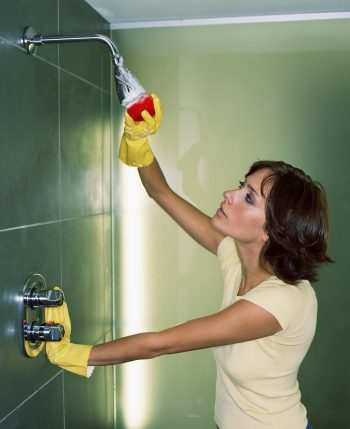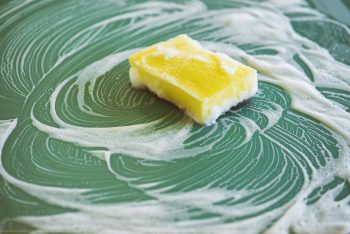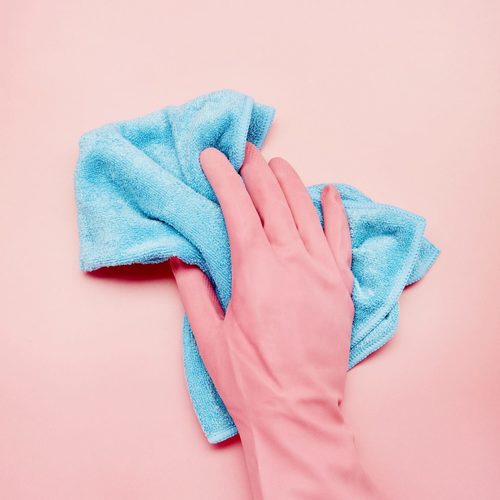As you walk around your home (if you’re like me, you walk barefoot) have you ever stopped to wonder what kind of bacteria might be lurking on your surfaces – on the floor beneath your feet, in the dirty sink, bathroom, or in those crevices you don’t quite reach when you clean?
The truth is, bacteria are everywhere in our homes, and some of them can be harmful to our health. In fact, studies have shown that the average home can be a breeding ground for thousands of different types of bacteria, from harmless ones to those that can cause serious illnesses.
If you’re anything like me, fixating on what sort of bacteria could be lurking will send you into absolute overdrive. With gloves, a washcloth, and the strongest cleaning agent you have, you’re ready to tackle all those germs head-on.
Before you jump in, let’s get a little more acquainted with bacteria first. We’ll dive into what sort of bacteria is common in the home, what is harmful to you, and ways to effectively clean it away.

Getty
Common bacteria found in households:
- Staphylococcus aureus: This is a type of bacteria that’s found on the skin and in the nasal passages of humans. While it’s usually harmless, it can cause skin infections and even more serious conditions like pneumonia or sepsis.
- Escherichia coli: Commonly known as E. coli, this bacteria is found in the intestines of humans and animals. While most strains are harmless, some can cause food poisoning or urinary tract infections.
- Salmonella: This bacteria is often found in raw meat, poultry, and eggs, and can cause food poisoning if ingested. Symptoms can include diarrhoea, fever, and abdominal cramps.
- Listeria: This bacteria is commonly found in soft cheeses, deli meats, and unpasteurised dairy products. It can cause serious illness in pregnant women, newborns, and people with weakened immune systems.
Where are these nasty buggers hiding?
Bacteria can be found almost everywhere in the home, but certain areas are more likely to harbour harmful bacteria than others.
A sink carries more bacteria than a toilet seat…
One of the most common places is the kitchen, particularly the sink, cutting boards, and countertops. These areas come into contact with raw meat and vegetables, which are potential sources of harmful bacteria. Also, the average kitchen sink contains more bacteria than a toilet seat! And that’s not all – sponges and dishcloths, which are meant to clean our dishes and surfaces, can actually be teeming with bacteria like E.coli and Salmonella.
Air out your bathroom…
Bathrooms are also a breeding ground for bacteria, particularly in areas that are damp and warm, like the shower and bathtub. A melting pot of bacteria include E-coli, Salmonella, Staphylococcus aureus, and Streptococcus can be found in the bathroom – the place you clean yourself in! They can be found on toilet seats, faucets, and door handles, and can easily be spread through contact with contaminated surfaces.
Surfaces you don’t think about
Other areas to be mindful of include doorknobs, light switches, and remote controls, as these items are frequently touched but often forgotten when cleaning. By paying attention to these areas and implementing proper cleaning and hygiene practices, you can greatly reduce the risk of harmful bacteria in your home.

Getty
How to avoid falling ill from bacteria
Now, you might be wondering how you can keep your home free from these harmful bacteria. Here are some bullet-proof tips:
Keep the kitchen clean:
The kitchen is one of the most important areas to keep clean and free from harmful bacteria.
This includes frequently washing your hands before and after preparing food, as well as wiping down all surfaces with a disinfectant regularly. Don’t forget to clean cutting boards and utensils after use, and to wash and disinfect your washcloths at least once a week to prevent bacteria buildup. To be extra safe with washclothes, soak them in bleach water before washing them in the machine.
Don’t neglect the bathroom:
The bathroom is another area where harmful bacteria can thrive, especially in damp environments. Make sure to clean and disinfect all surfaces, including the toilet, sink, and shower or bathtub every day or second day, depending on how busy your household is. Don’t forget to regularly wash and replace towels, and to clean your toothbrush holder and toilet brush holder.
Keep your bedroom and living areas clean:
Regularly dusting and vacuuming your bedroom and living areas can help prevent the buildup of bacteria and other allergens. Don’t forget to wash your bedding, including sheets, pillowcases, and comforters, at least once a week in hot water to kill bacteria and dust mites.
Pay attention to high-touch surfaces:
Like we’ve mentioned, high-touch surfaces, such as doorknobs, light switches, and remote controls, can harbour harmful bacteria. Make sure to regularly clean and disinfect these surfaces, especially if someone in your household is sick.
Keep your pets clean:
Pets can carry bacteria and other harmful germs, so it’s important to keep them clean and healthy. Regularly grooming and bathing your pets can help prevent the spread of bacteria in your home.
By taking these simple steps to keep your home clean and hygienic, you can help keep harmful bacteria at bay and protect yourself and your family from illness.
ALSO SEE:
Feature Image: Getty

